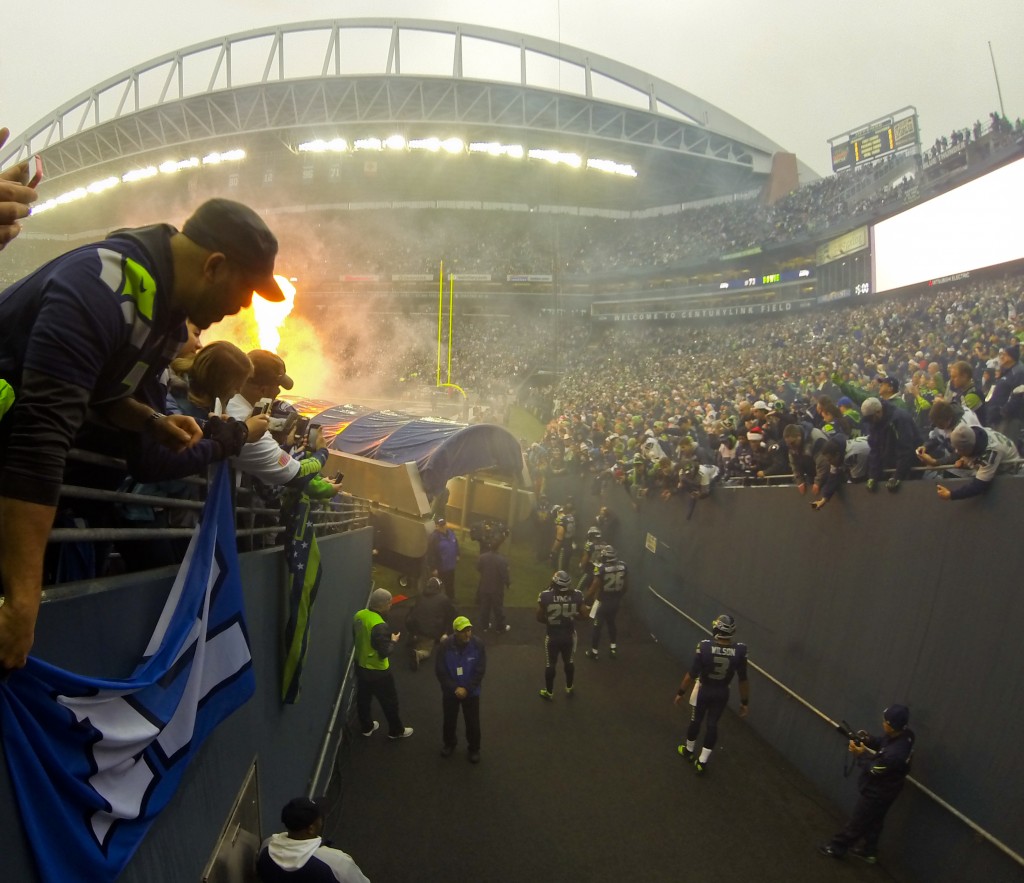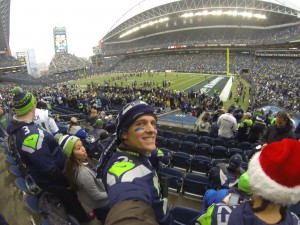It’s no secret that Seattle is proud of its football team.
This week, the Seahawks will enter the playoffs as the #1 seed in a lose-and-you’re-out tournament, where every game matters.
For the rest of the league, it means that the road to the Superbowl will be through Seattle. And while it’s difficult to win a playoff game on the road, traveling to Seattle comes with an extra dose of anxiety for opposing teams and coaches.
The reason: it’s loud. Very loud. Ear-splittingly, Guinness Book of World Records breaking, earthquake causing, call-in-sick-the-next-day-because-your-ears-still-hurt loud.
The experience of joining 67,000+ fans in a stadium designed for noise, is like nothing else on Earth. Everyone has heard a jet engine or stood too close to the speakers at a rock concert, but the 137.6 decibels created solely by human voices is another thing entirely.
We will try to describe what it’s like from 19 rows above field level during a late season game. Mind you, the building is specifically designed to direct sound down to the field (here’s an article in Sports Illustrated on the design of the stadium), so if you’re sitting in the upper deck, it may not feel the same as the 100 level.
From our perspective, here’s what it was like from Row S:
“I CAN’T HEAR YOU!”
The home field advantage plays the biggest impact when the defense takes the field. During those times, the crowd tries to disrupt the play and the throng is so intense, that you literally can’t hear the person screaming next to you.
Amanda was standing less than a foot from Jeff shouting questions into his ear, but she may as well have been a mime mouthing her words, because not a syllable could be distinguished over the roar.
That level of noise isn’t constant or sustainable. It hits a crescendo when the opposing team leaves the huddle, and carries through the play.
Loud on Defense, Silent on Offense
Seattle fans are know for making noise during the most strategic periods in a game. When Seattle’s offense was on the field (and needed to communicate) the crowd became so quiet that we could hear the players calling out individual plays on the field. In fact, we probably could have shouted to friends across the stadium and they would have heard us.
The strangest moments came right after the defense caused a turnover, and the stadium erupted with noise. Then, less than a minute later, the offense hit the field and a hush fell over the fans. Nothing appeared on the Jumbotron, no announcements were made. It was like a conductor gave a signal, and (in a span of about five seconds), the fans snapped their collective mouths shut. Things went from ear-splitting, to church mouse quiet.
Here’s an example of a late go-ahead score. Notice the crowd is tense but not yelling like hooligans until the touchdown.
The Science of Sound
What makes the loudest sound? We personally vouch for the long, continuous four-finger whistle. But most fans go with the traditional, “Ahhhhhh!”
With so many people shouting roughly the same tone, funky things happen to sound waves. The crests and troughs occur at the same time, which effectively cancels out certain tones (at least according to Amanda’s university professor mother).
While we won’t go into the physics of “destructive interference” the result is that certain sounds disappear. While the din is deafening, it’s sort of like the middle keys on a piano scale stop working during the long continuous roar.
Some will argue that they experience a pulsing sensation (known as “constructive interference”) which happens when the crests and the troughs of a sound wave pile up – like a rogue wave at sea. But we would argue that the pulsing sensation is actually a lack of blood to the brain from all the shouting.

